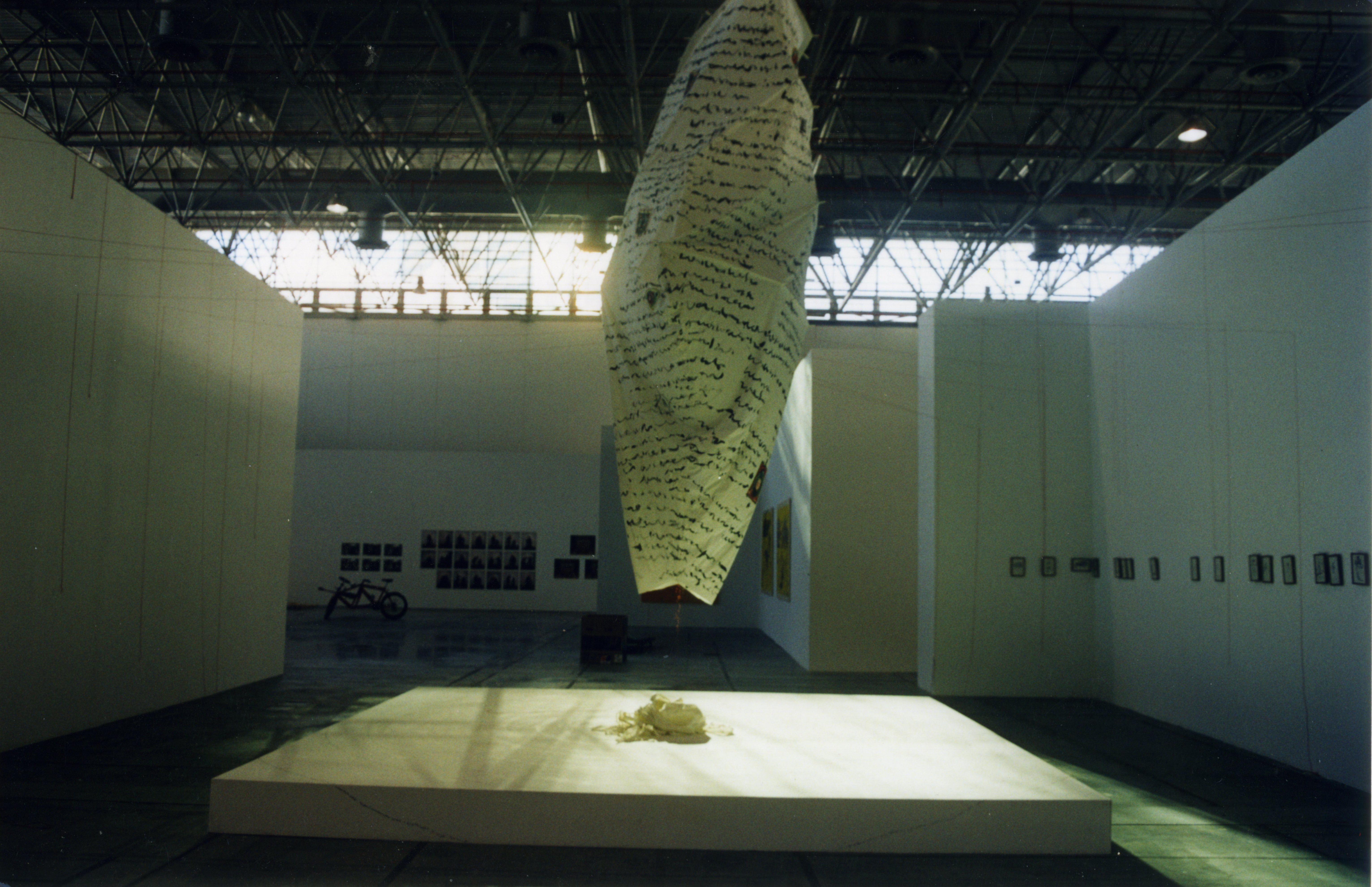
Selected Works, 1995-2000
Sandra Chandrasekaran
Selected Works, 1995-2000
Installation view
search


Sandra Chandrasekaran
Selected Works, 1995-2000
Installation view
In Yajur Veda, a devotee asked a priest, 'Who knows this world's central point? Who knows the heavens, earth, the width between them'.
He is answered by the priest: "I know the centre of the world about us. I know heaven, earth, and the width between them. This altar is the earth's most extreme limit; this sacrifice of ours is the world's centre."
This passage describes a conversation between a devotee and the priest who performs the fire oblation before an altar. Although the altar is of a fragment of brick and mol'[a~, It is transformed into a cosmic entity and a spiritual centre existing in mystical 'time' and 'space'. For us, space is quantitative which we understand in terms of dimension, volume and distance. For the priest, the space enclosed within the bound figure is purely qualitative; space is absolute void and unity IS il 'sacrament' by means of which he communicates with a force that stands for life itself. The act of 'binding' the figure, the 'fencing' of its four quarters and defining its spatial orientations is an act of asserting a space. This space begins to manifest as itself in a sense of primordial substance and shares in the nature of divinity on a spiritual level.
On a corporeal level, we are led to a division of space. The spatial division in a social order transforms the ergonomiCS where it becomes adjusted to an order, and where a human mind becomes subjugated within the act of binding. The act of binding transforms the area of manipulation into the space of a comfort zone whereof the concept of comfort denies the very act of binding or manipulation. This act of binding the human mind has become the very manifestation of the hybrid within the present social order.